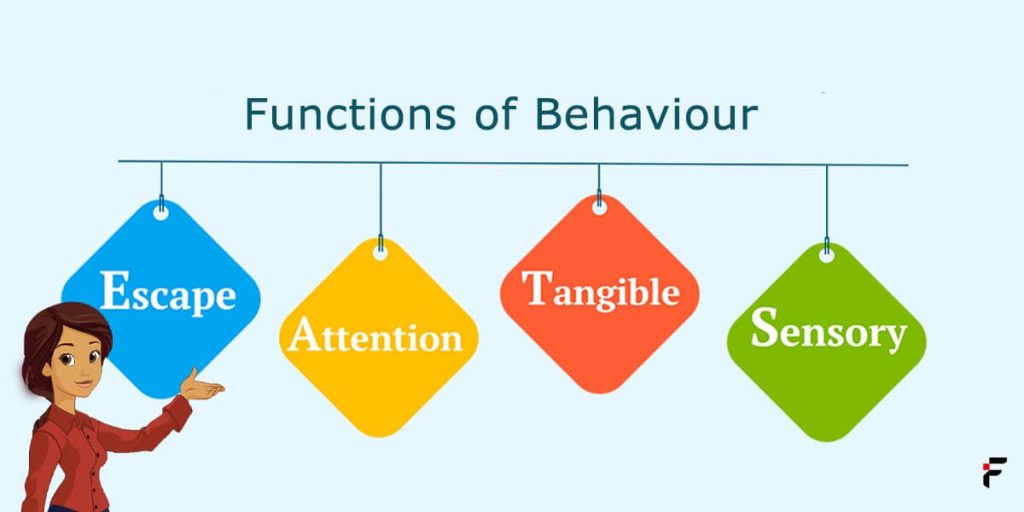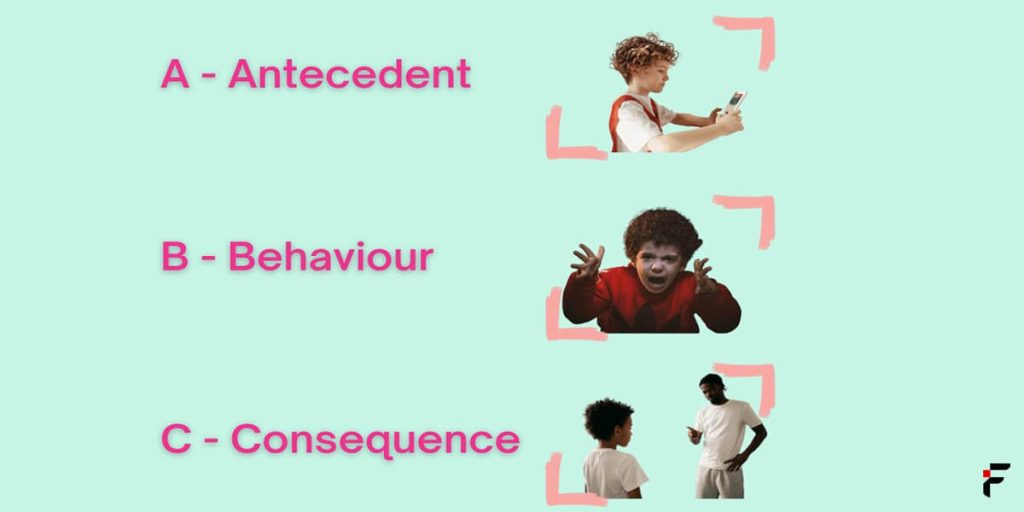Managing challenging behaviors in children can be difficult for parents, teachers, and caregivers. Whether the child has special needs like autism or not, unexpected behaviors can arise from time to time that are disruptive or potentially harmful. Adults’ must-have tools and strategies to address these behaviors constructively, effectively, and constructively. One such tool is the ABC (Antecedent-Behaviour-Consequence) chart, which provides a framework for carefully observing and analyzing behaviors to determine their underlying functions and triggers.
What is an ABC Chart?
An ABC chart is a simple observation tool that breaks down behaviors into three key components: antecedents, the behavior itself, and consequences. Antecedents refer to anything immediately preceding or triggering behavior, such as a specific demand, activity, or social interaction. The behavior is the observable action that occurs, described objectively without judgment. Consequences are the events that immediately follow the behavior, like access to a desired item, removal of demand, or reprimands from others.
By recording behaviors in this structured format over time, patterns can emerge that provide clues about the function or purpose that behavior serves for the child. All behaviors serve some function for the person engaging in them, even if disruptive on the surface. Standard functions include gaining adult or peer attention, escaping or avoiding unpleasant tasks, accessing preferred toys, activities, or other tangible rewards, and regulating overstimulating sensations. Understanding the function is essential for developing an effective support plan.
How to Complete an ABC Chart
Gathering specific observational details about antecedents, behavior, and consequences is essential to complete an ABC chart. Vague or generalized descriptions will not provide valuable insights. The following guidelines can help ensure high-quality data collection:
Antecedents
- Note the exact time the behavior occurred.
- Describe in detail what the child was doing immediately before, including activities, materials, people present, instructions given, and transitions required.
- Record environmental factors like noise level, lighting, temperature
- Consider internal antecedents like emotions, health issues, and hunger/tiredness.
Behavior
- Use clear, objective language to define the observable action.
- Include details like duration, intensity, and location.
- Consider multiple behaviors that may occur in a chain or episode.
Consequences
- Immediately record what happens within 1-2 minutes after the behavior ends.
- Include interactions with others, removal/presentation of activities, and items received or taken away.
- Note the child’s response to any consequences given.
It is also essential to record the date and time of each observation. Over time, patterns that were not obvious from isolated incidents alone may emerge.
Using ABC Charts to Identify Functions of Behaviour

Once several behaviors have been recorded using the ABC method, the next step is to analyze the data for patterns that provide clues about function. There are four main categories that behaviors often serve:
Attention-seeking: Behaviours that occur more frequently when the child is alone or not receiving attention from others. Consequences often involve gaining adult or peer attention through reprimands, even if hostile.
Escape/avoidance: Behaviours that occur more often during transitions, demands, and non-preferred activities. Consequences involve getting out of or avoiding an undesired situation.
Access to tangibles/activities: Behaviours occur more when access to preferred toys, snacks, electronics, or activities is blocked. Consequences involve obtaining the desired item or activity.
Automatic reinforcement: Behaviours maintained by internal factors like sensation-seeking or self-stimulation rather than social consequences. It may occur independently of external events.
Observers can make educated guesses about the underlying function by analyzing antecedents for patterns, such as more disruptions occurring during transitions or non-preferred tasks and consequences like gaining access to toys after a tantrum. It is important not to assume but to allow the data to point to the most likely hypotheses. Multiple functions may also be at play for complex behaviors.
Read More: Best Spelling Training Apps for Kids: A Comprehensive Guide
Developing Behaviour Support Plans
Once functions have been identified, effective behavior support plans can be developed. The goal is to teach replacement behaviors that serve the same function as the challenging behavior in more optimistic, socially appropriate ways. Common strategies include:
Attention-seeking behaviors: Provide high rates of positive attention and praise for appropriate behaviors. Ignore minor inappropriate behaviors while still providing attention when the child is calm.
Escape/avoidance behaviors: Make demands clear and consistent and pair them with rewards to build motivation. Provide breaks or remove demands temporarily when problem behavior occurs to avoid reinforcement.
Access to tangibles: Visual schedules and timers indicate upcoming access to preferred items/activities. Provide alternate activities during wait times to reduce frustration.
Automatic reinforcement: Identify calming activities and teach self-regulation skills. Modify environments to limit overstimulation and provide sensory breaks when needed.
Plans should also address modifying antecedents that reliably trigger behaviors by changing the environment, routines, activities, or adult responses. Consistency across all caregivers is essential. Ongoing data collection using ABC methods can track progress and guide necessary adjustments. With a sound understanding of the function and proactive support strategies, challenging behaviors can often be significantly reduced over time.
Ethical Considerations

While ABC charts are a helpful tool, there are some important ethical considerations to keep in mind when observing and collecting data on children’s behaviors:
- Always obtain informed consent from parents or guardians before conducting observations, explaining the purpose and intended use of the information.
- Respect the child’s privacy and confidentiality. Only share identifying details with those directly involved in providing support or care.
- Interactions should never be provoked or manipulated to gather data. Observe naturally occurring situations only.
- Balance needs detailed data to avoid excessive observation that could feel intrusive or disruptive.
- Explain the process to children in simple, age-appropriate terms and allow them to avoid being observed if they express discomfort.
- Store all written records securely and ensure compliance with relevant privacy laws and organizational policies.
- Use observations to help rather than label the child. Analyze objectively without assumptions and focus on function overdiagnosis.
With care and oversight, ABC charts can be implemented ethically to understand children’s experiences better and improve support strategies. Overall, the child’s welfare and rights should always be prioritized over data collection needs.
Case Study Examples
To illustrate how ABC charts can be applied, here are two brief case studies:
Case 1:
Johnny, age 6, has been hitting other children at school during free play. His teacher noticed this happens often when Johnny wants a toy that another child uses but can’t have. An ABC chart was started, and within a week, it was clear Johnny’s hitting was consistently preceded by being told he couldn’t play with a particular toy, followed by him gaining possession of that toy after the other child left in tears. This suggested the behavior was motivated by access to tangibles. The teacher then implemented a visual schedule, showing Johnny’s turn with unique toys and giving him alternate fidget toys to carry when he had to wait. Problem behaviors were reduced dramatically within two weeks.
Case 2:
Sophie, age 8, has autism and often screams and cries during transitions between activities at an after-school program. Her caregivers suspected she found the change disruptive but weren’t sure. ABC charts tracked that her meltdowns reliably occurred at the end of preferred activities like art or outdoor play when staff would give a 5-minute warning. However, she typically calmed quickly once the next activity started. This data suggested her behavior was motivated by escaping or avoiding the transition. Staff then incorporated Sophie’s favorite fidget toys and songs into transition warnings to give her sensory input and visual schedules showing the sequence of activities to reduce uncertainty. Problem behaviors were decreased substantially.
These examples demonstrate how ABC charts can provide insights to develop targeted, proactive strategies that positively meet the child’s underlying needs. With practice, this approach can yield powerful results for managing even very challenging behaviors across diverse settings.
Read More: Best Learning Games for Elementary Education in 2024
Conclusion
ABC charts are a highly effective tool for understanding the root causes of challenging behaviors in children. Through structured yet simple observation and data collection over time, meaningful patterns often emerge. Gaining clarity on behavioral functions allows for developing targeted, proactive support plans. As illustrated through the case examples, the ABC approach can significantly improve behavior management when implemented skillfully across diverse environments. Learning the ABC method should be a top priority for caregivers seeking to address disruptive behaviors constructively. It offers profound insights that can truly enhance a child’s well-being and development.




